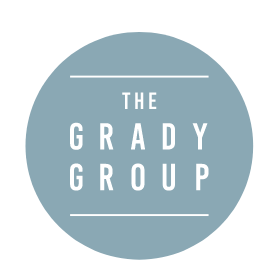Hiring the wrong executive for your firm can be costly.
Have you ever paused to contemplate the real price tag of a bad hire?
It’s not just about the immediate financial setback. According to the U.S. Bureau of Labor Statistics, compensation costs, which include salaries and benefits, have been on an upward trend, increasing by 4.8% over a year.
For private businesses, this increase is even more pronounced. But the true cost of bad hires doesn’t end with these rising financial commitments.
The real impact deeply affects your entire organization. It disrupts the harmony of your team, slows productivity, and tarnishes the reputation you’ve worked tirelessly to establish.
Don’t let these concerns overwhelm you: the power to rewrite this narrative lies in your hands. In this article, we aim to provide you with a clear understanding of the consequences of hiring the wrong person while also offering practical strategies to prevent such scenarios. So let’s get started on this path toward mastering effective hiring together.

What’s a Bad Hire?
A “bad hire” is more than just an employee who doesn’t meet the expectations set during the hiring process. It’s an individual who needs help to mesh well with the company’s culture, adhere to its values, or contribute positively towards its goals. They’re a bad fit all around.
The definition of what doesn’t work will change from one industry to the next. The wrong hire might need more skills, work collaboratively or deliver results even with sufficient training and resources. But it’s important to recognize that a poor hiring choice doesn’t always reflect the individual’s overall capabilities—it may simply be a mismatch between the employee and the company.
Common Misconceptions
One of the biggest misconceptions about a “bad hire” is that the blame rests entirely on the individual joining the team. We have to take a more bird-eye approach to take the entire picture. Only blaming the individual overlooks the complexities of hiring decisions. And if you’re overlooking things, you’re bound to repeat the same mistake.
It’s more than just a lack of competence or a poor attitude. Sometimes, it needs to be more aligned with expectations, a gap in communication, or even a rushed hiring process.
Bad Hires: Paradigm Shift
Let’s shift the paradigm here—instead of viewing a bad hire as a failure, see it as a learning opportunity. Unleash the power of proactive understanding: dissect these instances, recognize the warning signs, and strategize to minimize future hiring missteps. By doing so, you’re not just resolving an issue—you’re transforming your company’s hiring practices for the better.
The True Financial Impact
Now that we know what qualifies as a bad hire let’s dive into the consequences of bringing the wrong person on. The financial implications can be staggering, both directly and indirectly.

Direct Costs
Direct costs are the easiest to measure: the resources spent on advertising the job vacancy, conducting interviews, training, and onboarding the new hire, not to mention the salary and benefits paid during their tenure.
Depending on the role and level of seniority, these costs can run into tens of thousands of dollars, and that’s only the tip of the iceberg. The average time someone spends in a salaried position is 4.1 years. That’s almost half a decade of wasted capital.
Indirect Costs
Indirect costs, though harder to quantify, can be even more damaging. The wrong hire can negatively impact team morale, leading to decreased productivity and increased turnover among other employees.
Client relationships may suffer due to poor performance or service. Your team may have to spend additional time correcting mistakes, re-doing work, and handling damage control. The ripple effect of a single bad hire can be felt throughout the entire organization, causing a drain on both time and morale.
Beyond Money: The Non-Financial Costs
Money isn’t the only way to measure the cost of hiring the wrong person. We must also look at team morale, group dynamics, and more. The impact of the wrong hire on team dynamics is significant.
A single team member who doesn’t align with your company culture or who struggles to collaborate effectively can cause tension, foster negativity, and undermine the team’s overall performance. Even after letting this individual go, you’ll still be stuck cleaning up the damage they left behind.
Moreover, a good hire can help the company culture you’ve worked hard to cultivate. They might breed discontent, hinder open communication, and erode trust, stifling innovation and collaboration.
Company Reputation
In today’s digital world, a company’s reputation is its most valuable asset. A bad hire, especially in a high-profile role, can substantially damage your brand’s image. As you strive to master the art of hiring, consider the broader implications beyond the bottom line.
It’s not just about avoiding costs but promoting a thriving, positive workplace that attracts the best talent and fosters success. Remember, each employee represents your company, and the wrong fit can send a message you never intended to convey.
Be proactive, be diligent, and ensure your hiring practices reflect the high standards your company upholds. The success of your organization depends on it.
Tips for Hiring Quality Workers
Empower yourself with foresight and strategy. This will take your hiring process to the next level.
A strong starting point is clearly defining the job requirements and the necessary skills a candidate must possess. Make sure your job descriptions are accurate and detailed. This will help attract the right candidates and filter out those unsuitable.
Improve Interviews
Enhance your interviewing techniques to go beyond the surface. Incorporate behavioral and situational questions about the candidate’s problem-solving abilities, teamwork, and adaptability. Also, consider adding a practical component to the interview process where candidates can demonstrate their skills.
Align Values
Understand that skills alone don’t make a good hire—cultural fit is equally important. What type of attitude does this individual offer? Does the candidate’s values align with your company’s?
Will they thrive in your work environment? To assess this, involve various team members in the hiring process for a well-rounded view.
Maximize Potential
Strive for the best hires to maximize your company’s potential. Take your time with the process and settle for more. A thorough and patient hiring process can save you from the costly repercussions of a bad hire and pave the way for organizational success.
Recruiting Success-Driven Employees
Recruiting employees who work well with your company is a delicate process. As you can see, hiring the wrong person can set you back financially, hurt company morale, and waste everyone’s time.
The true cost of a bad hire extends far beyond the finances. It includes impaired team dynamics, a compromised company culture, and potentially damaging your reputation. By recognizing the high stakes of hiring decisions and implementing the steps necessary to avoid choosing the wrong person, you’re not just fixing a problem but setting your company on a path to greatness.
The Grady Group understands that the success of your team, your culture, and your bottom line depends on finding the right person. Our nationally recognized recruiting firm can help you find award-winning talent. Contact the Grady Group today, and we’ll see how we can help you with your hiring needs.






